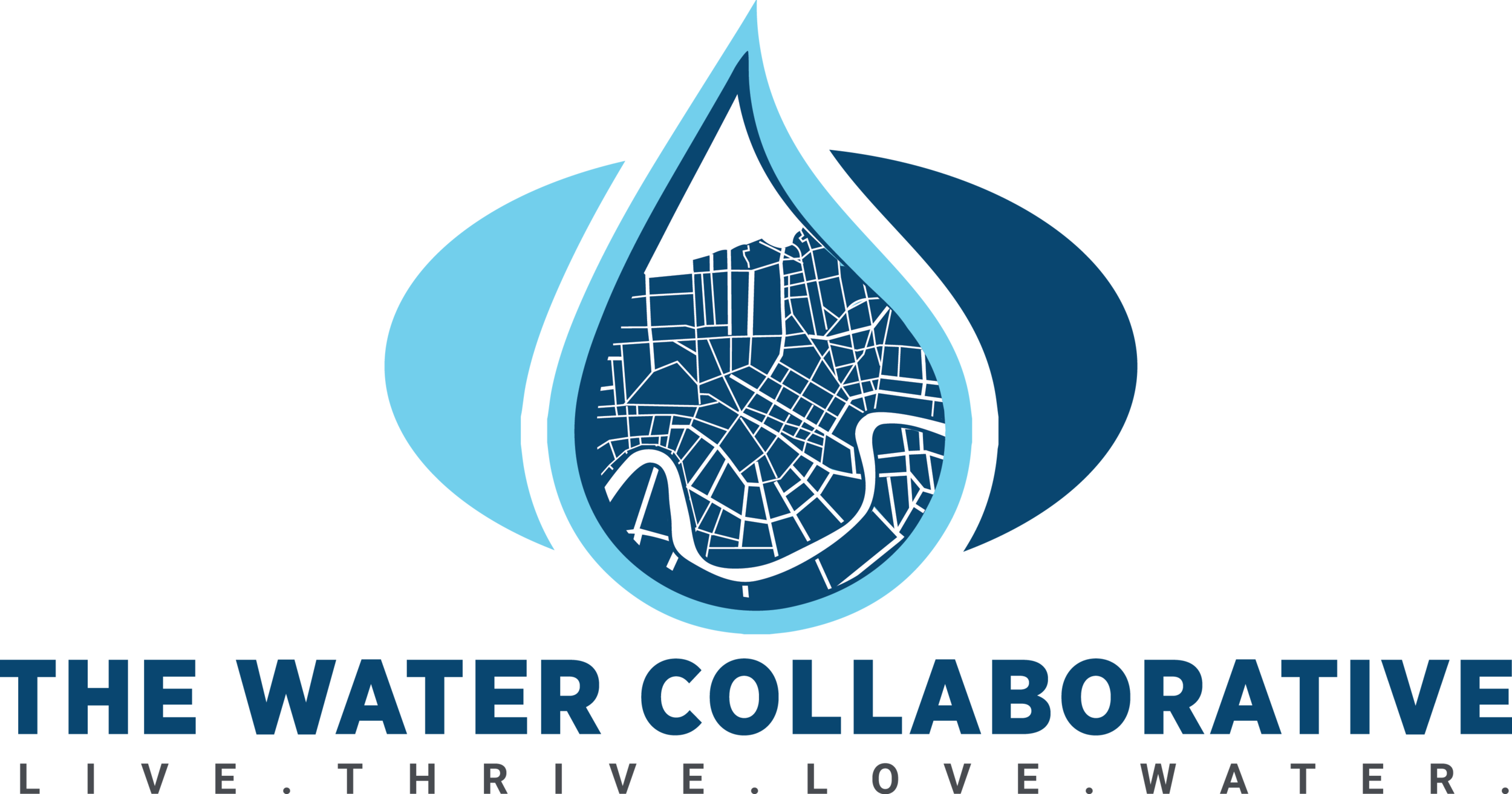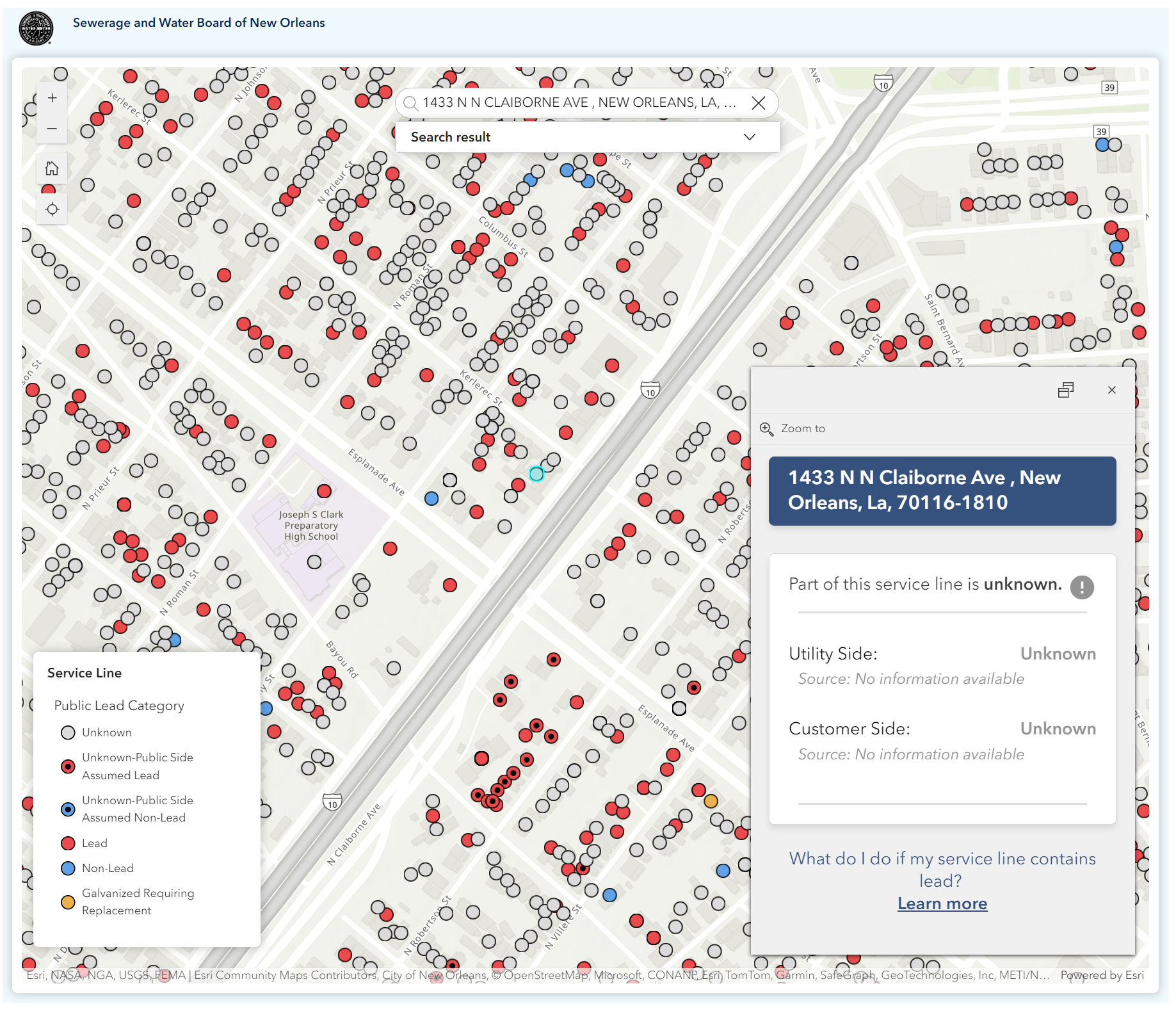Navigating the Changes: Lead and Copper Rule Improvements
By: Taya Fontenette, Policy and Research Coordinator
On October 8, 2024, the U.S. Environmental Protection Agency (EPA) finalized the Lead and Copper Rule Improvements (LCRI). Scheduled to take effect in 2027, the LCRI aims to tighten existing regulations on lead and copper in drinking water, with a focus on more stringent requirements for lead service line replacements and improved public education. Alongside these updated rules, the EPA announced an additional $2.6 billion in infrastructure funding through the Bipartisan Infrastructure Law allocated for lead pipe removal and remediation across the United States.
Key Changes Under the LCRI
The LCRI introduces significant changes to improve public health protections, including:
Mandatory Removal of Lead Service Lines: Unlike the previous rules, which required replacement only after lead action level exceedances, the LCRI mandates the system-wide replacement of all lead and galvanized requiring replacement (GRR) service lines within 10 years.
States can allow deferred deadlines under specific conditions, but the goal is a complete replacement of lead pipes across the country within the set timeframe.
Lower Action Level: The LCRI lowers the lead action level from 15 parts per billion (ppb) to 10 ppb.
Stronger Public Outreach: This includes more frequent and transparent public notifications, and clearer information in annual Consumer Confidence Reports, especially regarding lead testing in schools and childcare facilities.
Federal Funding Support: To facilitate compliance, the EPA has announced significant funding through the Bipartisan Infrastructure Law, providing over $26 billion dedicated to lead pipe replacement. Nearly half of it directed to disadvantaged communities as grants or principal forgiveness loans.
Continuation of Key LCRR Requirements
In 2021, the EPA introduced the Lead and Copper Rule Revisions (LCRR), which were the first set of comprehensive updates to the rule in 30 years, with a compliance deadline of October 16, 2024. However, the new administration sought to further strengthen these regulations. In December 2023, the EPA proposed additional updates through the Lead and Copper Rule Improvements (LCRI), with the intention of finalizing these updates before the LCRR compliance date.
Key LCRR requirements that will remain in effect for the original compliance deadline include:
Initial Service Line Inventory: Water systems must complete an inventory of service line materials and submit to the state and provide access to the public.
Notify properties with known or potential lead service lines within 30 days of inventory completion, then annually.
Submit notification compliance reports to the state by July 1, 2025, and annually thereafter.
Notification of Service Line Material: Water systems are required to publicly notify properties with known or potential lead service lines annually.
Tier 1 Public Notification: Systems must comply with Tier 1 public notification requirements within 24 hours to the public and the state if there is a lead action level exceedance.
Associated Reporting: Compliance with reporting requirements related to these provisions is mandatory.
States report inventory data to the EPA by March 3, 2025.
Report the 90th percentile concentrations to the state within 15 days of the end of the tap sampling period, conducted every three years).
Areas of Concern
While the Lead and Copper Rule Improvements represent a significant step forward, they fall short in several critical areas, leaving gaps in protection and implementation. One key limitation is that the LCRI does not require utilities or water systems to cover the cost of replacing private lead service lines, placing a significant financial burden on homeowners, particularly in low-income communities. This may lead to situations where utilities replace the public portion of the line, but the private side remains untouched if homeowners cannot afford the cost. Since the LCRI only counts full service line replacements toward compliance, partial replacements—where only the public side is replaced—are discouraged, but not prohibited, under the updated rule. This can delay replacement efforts as states work to allow for private replacements.
The LCRI also retains an action level that is not fully health-based. The threshold for lead is set at 10 parts per billion (ppb), but action is only required when more than 10% of sampled homes exceed this level. This approach does not adequately address the cumulative risks for individuals in homes with moderate to elevated lead exposure, which can still cause adverse health effects, especially among vulnerable populations like children.
Additionally, the LCRI does not expand testing requirements for schools. While schools and childcare centers are included in the testing regime, the rule does not mandate that parents, guardians, or staff be notified about lead exceedances, potentially leaving those directly affected uninformed about health risks.
Finally, while the Bipartisan Infrastructure Law (BIL) provides over $26 billion in funding for lead pipe replacement, the LCRI does not guarantee long-term federal funding beyond this initial allocation. Once these BIL funds are exhausted, water systems may struggle to secure the necessary resources for comprehensive replacement and mitigation efforts. This funding gap could severely undermine the effectiveness of the program, especially in larger cities with extensive lead service line infrastructure, where the need for long-term, sustained funding is crucial.
Impact on New Orleans
On October 11th, the Sewerage and Water Board of New Orleans (SWBNO) released their service line inventory map ahead of the Lead and Copper Rule compliance deadline of October 16th. This map is a critical step toward transparency in addressing the city’s lead service line challenges. The inventory revealed that SWBNO has identified at least 15,000 known lead service lines within its system, alongside 119,000 lines made from unknown materials.
This information highlights the significant scope of the issue in New Orleans and the fact that SWBNO has a long road ahead. They will need to undertake extensive investigations and testing to confirm the composition of these lines and determine the order of replacement. The program will begin with the replacement of 800 public lead service lines and inspections of 300 lines at schools and daycare centers, focusing on areas of highest risk, particularly those serving young children. Mailer notifications of lead and unknown lines will start to go out to the public in November, marking the next step in addressing the issue and keeping residents informed.
However, work is set to begin in 2025, with SWBNO prioritizing public replacements and vulnerable populations first. They have secured $86 million in funding from the State Revolving Fund, and additional funds are being pursued. As the project advances, SWBNO’s ongoing efforts will not only focus on identifying and replacing lead service lines but also on securing the necessary resources to meet the city's long-term goals for water safety. Replacements will continue through 2027 and beyond, with the goal of addressing both the known and unknown service lines to protect public health.
Resources
Background on the original LCR and the LCRR - Navigating the Changes
Latest Updates
EPA will be conducting an informational webinar for the general public on October 24, 2024 to provide information about the agency’s final Lead and Copper Rule Improvements (LCRI). Please register to attend here.




